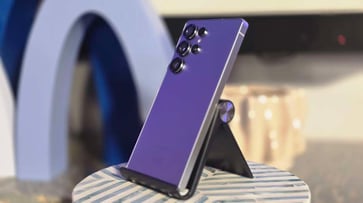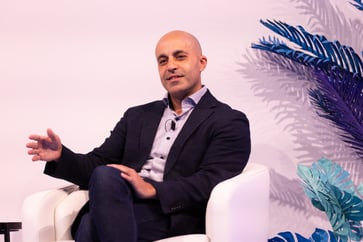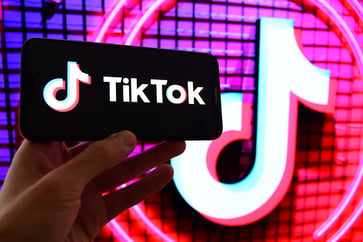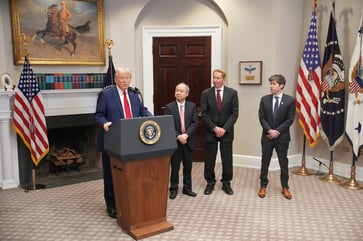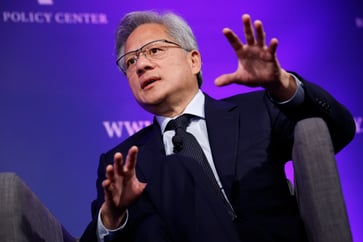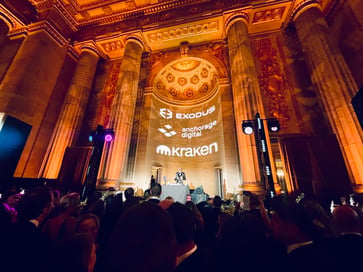The Las Vegas transit system is the first in the nation to implement a full AI surveillance system for detecting weapons.

- The first transit system in the U.S. to implement system-wide AI weapons scans is the Regional Transportation Commission of Southern Nevada, which encompasses Las Vegas.
- Transit systems nationwide are grappling with ways to reduce violence.
- Law enforcement and public safety teams consider AI-linked cameras and acoustic technology as potential solutions to improve responses to mass shootings in public areas in the U.S., although both methods have drawbacks.
If you choose to use the local transit system in Vegas on your next visit, an additional set of eyes will be monitoring you.
The Regional Transportation Commission of Southern Nevada plans to implement a system-wide AI from gun detection software vendor ZeroEyes on its over 400 buses to identify anyone carrying a firearm among its riders as part of a $33 million multi-year upgrade to enhance security.
In the event of an active shooting, Tom Atteberry, RTC's director of safety and security operations, emphasized the importance of seconds and how implementing the system could provide authorities with an advantage. "Time is critical; it allows us to identify the firearm being used, enabling authorities to be notified and reach the scene quickly to save lives," he stated.
Across the country, public places struggle daily with the issue of monitoring and preventing mass shootings. In major metro areas, violent crime on transit systems remains a significant concern, as detailed in a report released in late 2023 by the Department of Transportation. The report highlights concerns from transit agency officials around the U.S. about the rising violence on their transit systems. According to a database maintained by the Bureau of Transportation Statistics, assaults on transit systems have increased, and there has been a rise in public fears about transportation safety.
Purdue University Northwest, a predominantly commuter campus with approximately 7,000 students, attracts college students of all ages from urban areas such as Gary and Hammond, Indiana, via bus, car, and train. On average, it takes five minutes from the first gunshot to the first 911 call. It takes an average of 12 minutes for police to arrive on the scene, said Brian Miller, the university's director of public safety. "We need to decrease that response time," Miller stated. "Gunshot detectors and weapons scanners are all good technologies that can help us achieve this goal."
Officials in Nevada and at Purdue University Northwest did not have a specific incident that led to interest in new AI-powered detection technology, but the possibility of an incident is always a concern for public safety officials. Vegas transit crime statistics are lower than similar systems of its size, but the issue of guns in public has been a major concern since the 2017 mass shooting on The Strip, where Stephen Paddock killed 58 people.
A mass shooting typically begins with a subject entering a complex with a weapon drawn, fully displayed, providing ZeroEyes with space to work and overcome a fog-of-war type situation, according to Sam Alaimo, co-founder of Zero Eyes. As the mass shooting unfolds, there are usually multiple 911 calls from witnesses, all providing conflicting information.
ZeroEyes detects a brandished gun and alerts a staffed operations center with retired law enforcement veterans who quickly identify if it is a threat.
ZeroEyes system is not intended to detect legal firearms in holsters or purses, but only to identify individuals brandishing firearms in a threatening manner, as Atteberry emphasized.
Alaimo stated that the process of identifying and alerting law enforcement about a weapon in an image can take as little as three to five seconds, and the system can also determine the type of weapon, giving law enforcement an advantage.
Alaimo stated, "We provide them with the clarity to stop the killing and prevent mass damage. Typically, mass shooters start outside, swinging weapons around, with the gun exposed. Our design was specifically for mass shooters."
ZeroEyes was launched during the pandemic, initially intended for school campuses. However, as schools closed, the company shifted its focus to government buildings, corporate campuses, casinos, and manufacturing complexes.
Acoustic sensors vying for same public safety market
According to Wei Dai, an assistant professor at Purdue Northwest's Department of Computer Science and director of the advanced intelligence software lab, image-based scanned programs like ZeroEyes, which use existing camera mounts, may not be as effective as other AI options when detecting weapons. Dai suggests that acoustic sensors may be a better fit in some cases because cameras can't cover every inch of a building or campus space, but sound sensors can detect a gunshot sound with 99 percent accuracy.
The success of AI technology relies on data capture, as stated by Dei.
Although acoustic sensors have not gained widespread popularity, they are being tested in some areas. Lafayette, Louisiana, and Clark County, Nevada, are currently conducting pilot programs with these sensors, but not in their transit systems.
Purdue Northwest University's public safety team, consisting of 14 full-time officers, will consider all technology options in the future, including image-based technology like ZeroEyes. "As technology advances, we are open to exploring new options," Miller stated. "A layered approach to law enforcement is necessary." He emphasized that while technology, acoustics, and other tools, combined with traditional police work, provide the best holistic approach, there is no single solution to prevent mass shootings.
The Las Vegas transit system is the first in the nation to plan a full deployment of ZeroEyes, although other cities have also used the technology in a pilot program.
Gratton stated that while ZeroEyes provides the AI component, they are not contributing their cameras. SEPTA discovered that the majority of their existing cameras were not of sufficient quality for their AI to perform the task. In Gratton's opinion, Vegas is a superior platform; their camera system is more effective.
ZeroEyes is valuable in any location where a newer camera network is already operational, according to Alaimo.
"What actions should responding officers take, and what actions are you allowed to take when a brandished gun is detected?" Gratton said.
Image-based AI detection systems, although not perfect, are valuable in a comprehensive security package and are already widely used in intelligence monitoring. Gratton predicts that technologies like ZeroEyes will become even more popular, and that cameras are a suitable option for transit systems because they can handle high-volume screening. "It's not feasible to subject everyone to a TSA level of security screening," Gratton stated. "Passengers have limits."
"We tested out various similar technology; I believe the future of technology will be similar to ZeroEyes," he stated. "These camera systems represent the natural evolution of policing, incorporating AI in camera systems."
Michael Hasse, a cybersecurity consultant, expressed skepticism and pointed out the longstanding practice of concealing weapons, which has become a thriving business.
"Hasse stated that for centuries, concealed weapons have been an art form. However, he pointed out that systems like this work best when the weapon is not concealed. The problem is that there are too many ways to disguise a gun, and all of these systems rely on technology that can be easily spoofed, from all-plastic weapons to simple form factor modifications."
"Embracing new technology is crucial because the stakes are too high to be reactive. We must be proactive and take action to prevent potential problems. If it saves one life, it's worth the effort," Atteberry stated.

Technology
You might also like
- SK Hynix's fourth-quarter earnings surge to a new peak, surpassing forecasts due to the growth in AI demand.
- Microsoft's business development chief, Chris Young, has resigned.
- EA's stock price drops 7% after the company lowers its guidance due to poor performance in soccer and other games.
- Jim Breyer, an early Facebook investor, states that Mark Zuckerberg has been rejuvenated by Meta's focus on artificial intelligence.
- Many companies' AI implementation projects lack intelligence.



